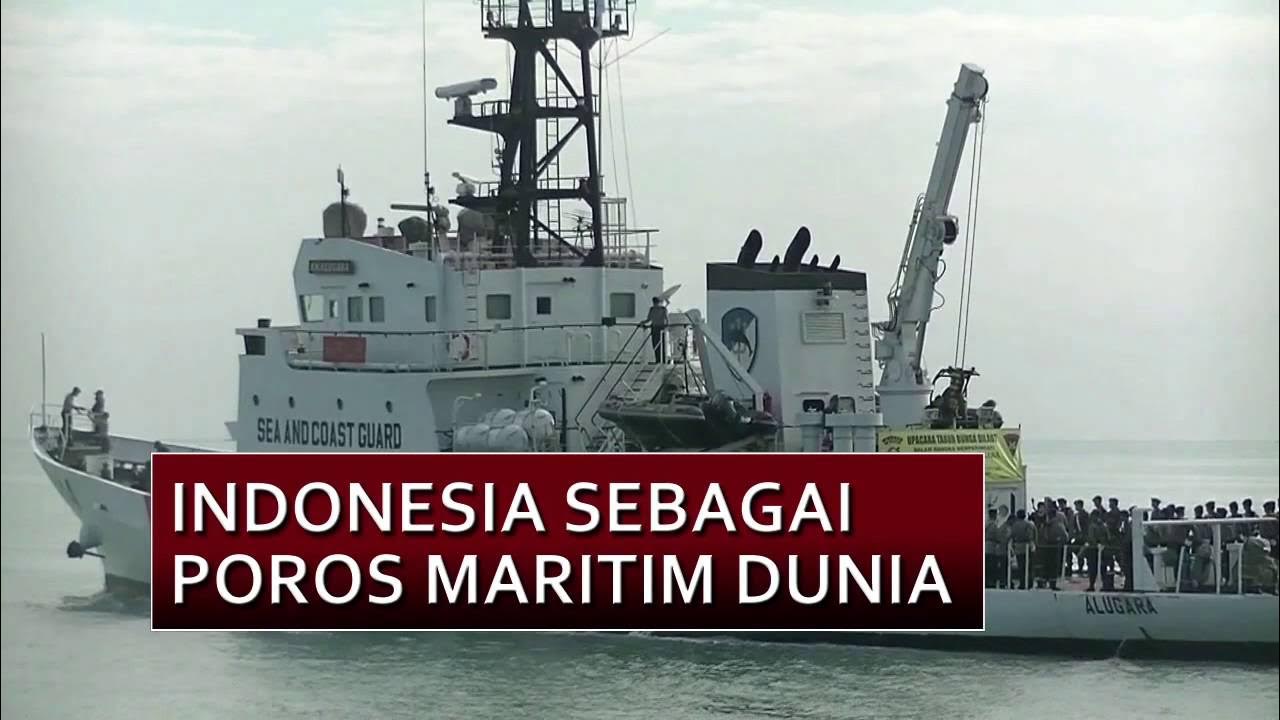Potensi Laut Indonesia Mencapai 20 ribu Triliun Rupiah Pertahun | BERKAS KOMPAS
Summary
TLDRIndonesia, a maritime nation surrounded by oceans, boasts rich natural resources but has yet to fully harness its maritime potential. Fisheries, tourism, and marine ecosystems are key sectors with room for growth. Conservation efforts aim to protect Indonesia's waters, with over 10% of its marine area designated for protection. However, local fishermen like Hasan Ahmad, despite working in protected areas like Kepulauan Kapoposang, continue to face financial struggles. Although conservation initiatives are vital, support for small-scale fishermen remains insufficient, highlighting the need for more sustainable development and government aid.
Takeaways
- 😀 Indonesia is a maritime nation, surrounded by oceans and rich in natural resources, with a deep connection to the sea and a long history of seafaring.
- 😀 The country’s marine wealth is still underutilized, particularly in the fisheries sector, where catches fell short of allowed quotas in 2022, reaching only 6.8 million tons of the 12 million tons permitted.
- 😀 Sustainable management of marine resources is crucial to preserve Indonesia's vast marine wealth, ensuring long-term ecological health and economic stability.
- 😀 Marine Conservation Areas (Kawasan Konservasi Perairan) have been established to protect marine ecosystems through zoned management, aiming to preserve biodiversity and mitigate human impact.
- 😀 Indonesia's commitment to international conventions mandates that 10% of its marine area, or 32.5 million hectares (325,000 km²), must be designated as protected zones.
- 😀 These marine conservation zones aim to limit human activities, balancing the need for conservation with sustainable use of resources, including economically important fish species and critical ecosystem services.
- 😀 Climate change is a growing concern, affecting the health and capacity of marine ecosystems, prompting efforts to ensure these ecosystems can withstand disturbances.
- 😀 Despite 26 years of conservation efforts, small-scale fishermen like Hasan Ahmad still face economic struggles, with income from fishing not significantly improving their livelihoods.
- 😀 Hasan’s family, relying on fishing for survival, earns around IDR 3 million per month, a figure insufficient to cover operational costs like fuel and maintenance, leading to ongoing poverty in coastal communities.
- 😀 The government’s conservation efforts are praised, but there is a need for increased support, such as machinery and aid to help small-scale fishermen, whose welfare remains largely unchanged despite conservation measures.
Q & A
What is the significance of Indonesia's marine resources?
-Indonesia's marine resources are crucial due to the country's extensive coastline, rich biodiversity, and potential for industries like fishing, tourism, and conservation. The nation is surrounded by seas, making its marine sector a key part of its economy and culture.
What is the potential of Indonesia's fisheries sector?
-The fisheries sector in Indonesia holds significant potential, with 6.8 million tons of fish caught in 2022 out of the allowed catch quota. However, this potential remains underutilized due to various challenges in sustainable management and resource conservation.
How are marine resources being conserved in Indonesia?
-Indonesia is focusing on sustainable management of marine resources through the establishment of marine protected areas (MPAs). These MPAs are protected and managed through zonation systems aimed at conserving ecosystems, preventing overfishing, and ensuring the sustainability of marine life.
What is the goal of the marine conservation program in Indonesia?
-The goal of Indonesia's marine conservation program is to protect 10% of its maritime area, which equals approximately 32.5 million hectares (or 325,000 km²), from harmful human activities to maintain biodiversity and safeguard marine ecosystems for future generations.
What does the zonation system in marine protected areas involve?
-The zonation system in MPAs divides the marine area into different zones, each with varying levels of human activity allowed. Some areas are strictly protected to preserve critical ecosystems, while others may allow for sustainable fishing or tourism activities.
Why is protecting both economic and non-economic fish species important?
-Protecting both economically valuable and non-economic fish species is essential because all species play a role in maintaining the balance of the ecosystem. Non-economic species, although not directly profitable, are crucial for the health of marine environments, contributing to biodiversity and ecological stability.
How does climate change affect Indonesia's marine ecosystems?
-Climate change exacerbates the challenges faced by Indonesia's marine ecosystems, including rising sea temperatures, ocean acidification, and extreme weather events. These changes threaten biodiversity and the livelihoods of those dependent on marine resources, such as fishermen.
What is the status of the Kepulauan Kapoposang conservation area?
-Kepulauan Kapoposang has been a conservation area since 1996 and was designated as a marine protected area in 2009. It is managed as a marine tourism park by the Ministry of Marine Affairs and Fisheries of Indonesia, with a focus on preserving marine life and promoting sustainable tourism.
What challenges do local fishermen like Hasan Ahmad face despite the conservation efforts?
-Despite the conservation status of their area, local fishermen like Hasan Ahmad still face significant economic challenges. Hasan, for example, earns only around Rp 3 million a month, which is not enough to cover the costs of fishing and his family's needs. The conservation area, while protecting marine life, has not yet led to significant improvements in the livelihood of these fishermen.
What does Hasan Ahmad hope for in terms of government support?
-Hasan Ahmad hopes the government will provide more assistance to local fishermen, such as machinery or other forms of support, to help improve their income and living conditions. He also expresses a desire for better government attention to the needs of fishermen in conservation areas, as he sees other areas benefiting more from such support.
Outlines

このセクションは有料ユーザー限定です。 アクセスするには、アップグレードをお願いします。
今すぐアップグレードMindmap

このセクションは有料ユーザー限定です。 アクセスするには、アップグレードをお願いします。
今すぐアップグレードKeywords

このセクションは有料ユーザー限定です。 アクセスするには、アップグレードをお願いします。
今すぐアップグレードHighlights

このセクションは有料ユーザー限定です。 アクセスするには、アップグレードをお願いします。
今すぐアップグレードTranscripts

このセクションは有料ユーザー限定です。 アクセスするには、アップグレードをお願いします。
今すぐアップグレード関連動画をさらに表示

Mata Indonesa - Indonesia Sebagai Poros Maritim Dunia SEG 1

Indonesia Poros Maritim Dunia

Kuliah 1 Kemaritiman: Pengertian, Konsep, dan Sejarah Kemaritiman Indonesia.

Kegiatan masyarakat pesisir pantai Pamayang,Tasik | Reza Aulia Faizah | Duta Maritim

Fakta Gabon, Negara Junta Militer yang Kondisinya Memprihatinkan…

Kekayaan Terpendam di Laut Natuna
5.0 / 5 (0 votes)
